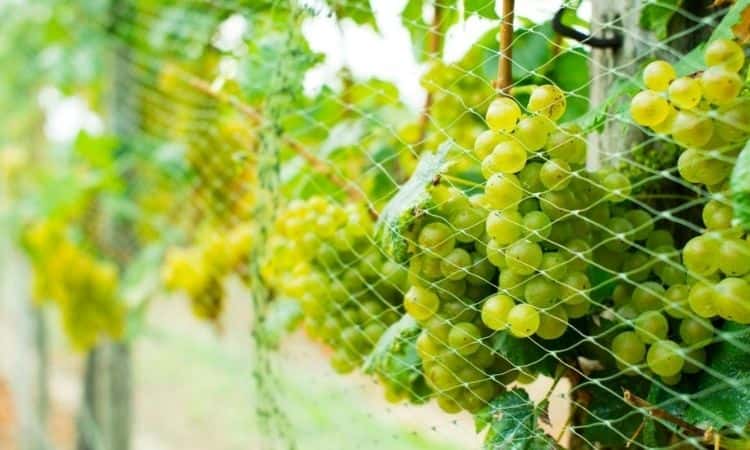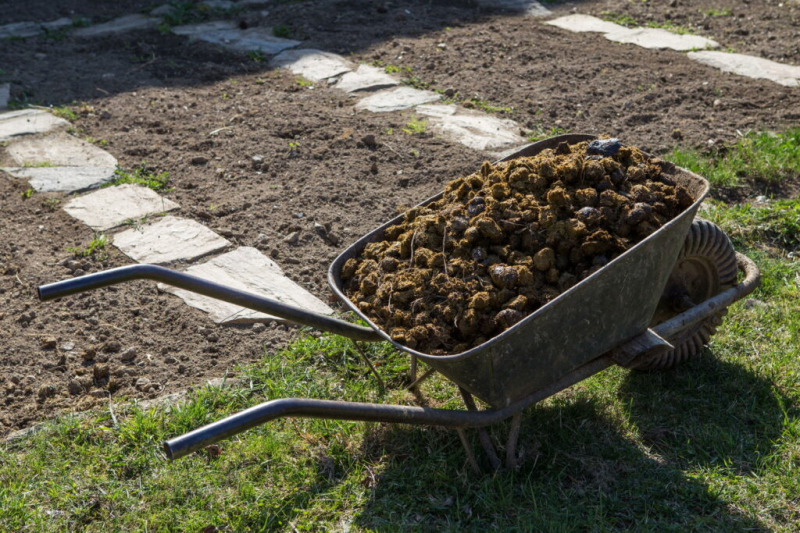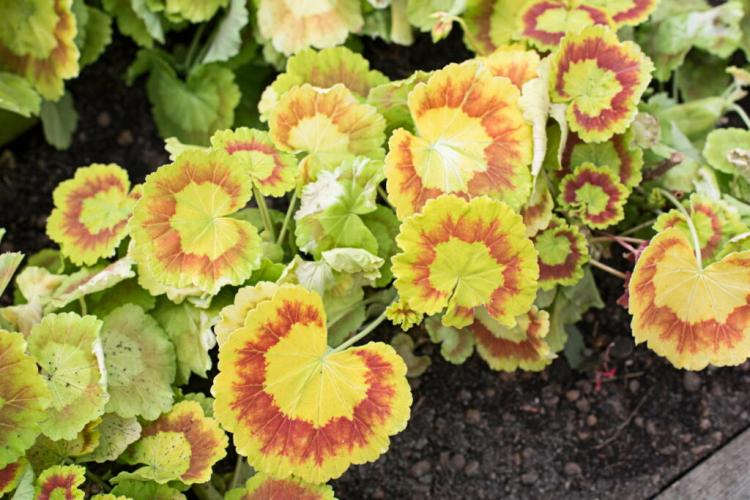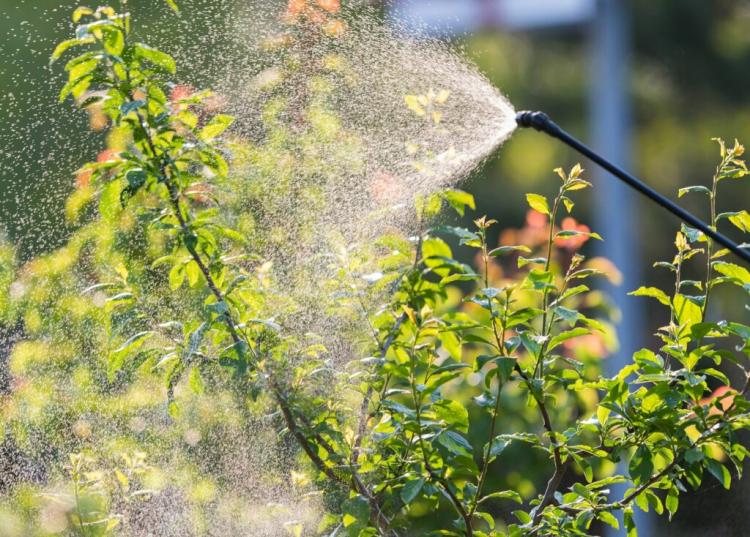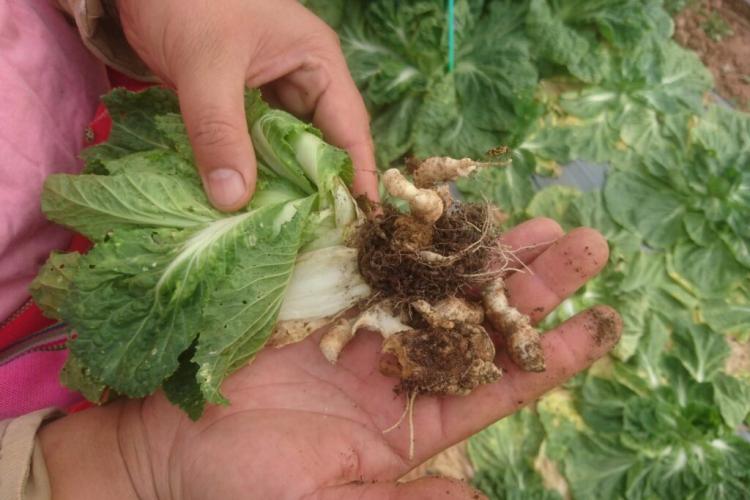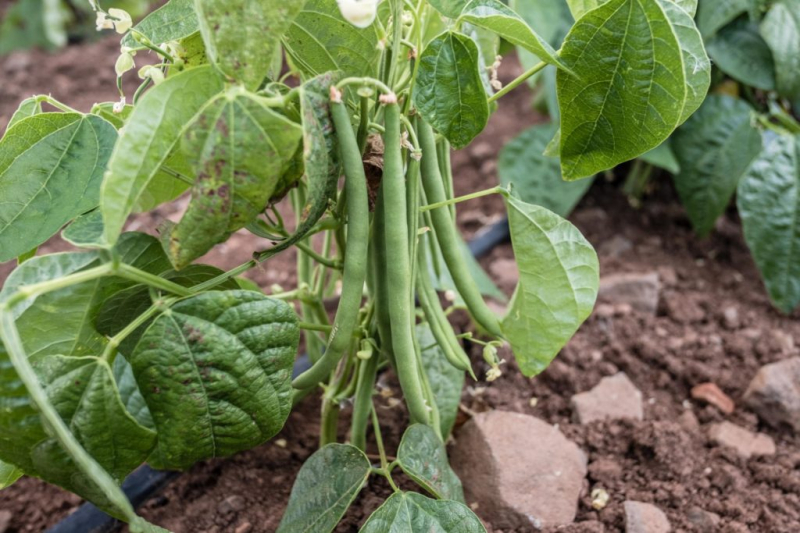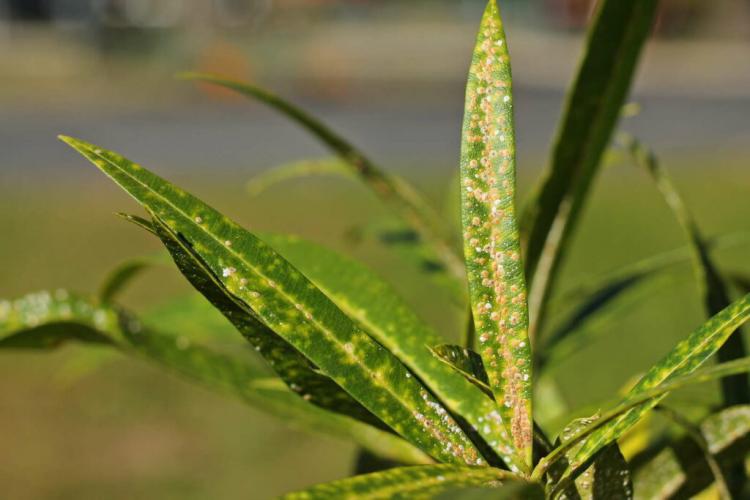How To Protect Grapes From Birds And Wasps?
Sweet grapes are a popular summer snack. But not only people like to nibble on the grapes, wasps and other animals also like to eat the delicious berries. Here you can find out how to protect your grapes from wasps and the like.
In autumn, many gardeners are especially looking forward to the sweet, tasty grapes (Vitis vinifera), which are now beginning to ripen. It takes up to 120 days for the tasty grapes to develop their sweet taste and typical aroma.
So it is all the more disappointing when you notice that someone has already tasted the sweet grapes: Wasps also love the taste of grapes and like to eat large holes in them.
But many species of birds also see grapes as a welcome source of food. You can find out how to keep wasps away from grapes and what you should consider when protecting grapes here.
Why do wasps eat grapes?
Table of Contents
Many gardeners are very surprised when they see wasps helping themselves to their grapes. The fact that wasps feed mainly on animal food, for example, other insects, or already damaged fruit, is a widespread prejudice.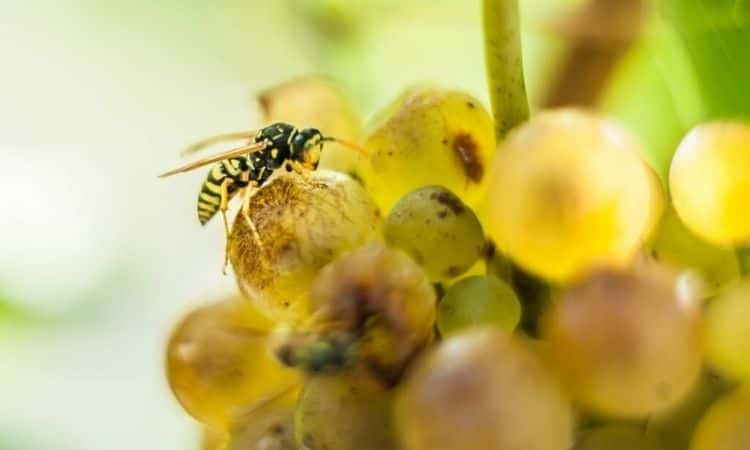
In fact, the menu of wasps is very diverse. Although larvae mainly eat animal proteins, adult wasps also feed on nectar, pollen, and plant juices. The following often applies: the sweeter, the better.
For this reason, grapes are very popular with wasps – the sweet scent and high sugar content are very tempting for wasps. Especially when fully ripe, when the grapes contain large amounts of sugar, they offer an excellent food source for wasps.
During ripening, the thin skin of the grapes is no obstacle: the wasps can easily penetrate it with their mouthparts.
What damage do they do to grapes?
With their sharp mouthparts, wasps eat holes in the individual fruits or can even hollow them out completely. In warm summers or when there is a large population of wasps, this can have devastating consequences because the wasps can spoil a large part of the harvest.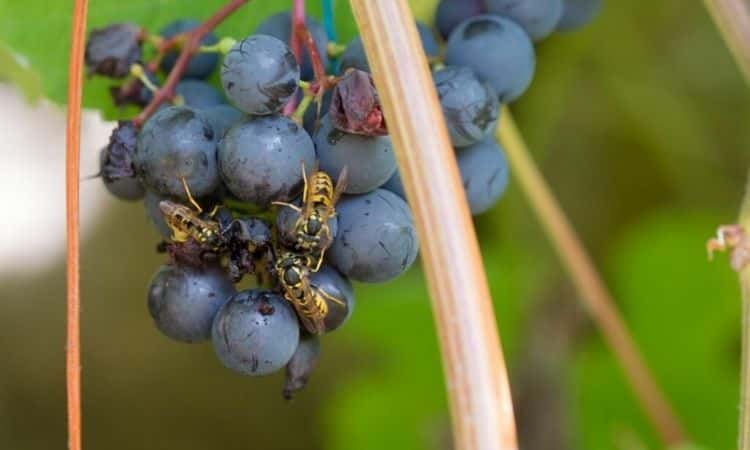
Not only is the damage caused by wasps a nuisance for gardeners – but the injuries also make the grapes more susceptible to disease. Rotting fungi and acetic acid bacteria can consequently attack the grape and cause severe damage.
Also, damaged grapes and grapes infected by fungi and bacteria are not suitable for consumption. Also, grapes that were not eaten directly belong unfortunately partly to the waste: By the down flowing juice of higher-lying grapes also they can become fast victims of fungal diseases.
How to keep wasps away from pigeons
If you want a high-yield grape harvest and are worried that wasps might damage the grapes, you can take simple preventive measures to keep them away.
Since wasps prefer grapes when fully ripe, it is sufficient to start taking protective measures a few weeks before the harvest. But be careful: If the insects have already discovered the grapes as a food source, it is often difficult to drive away from the wasps on the grapes.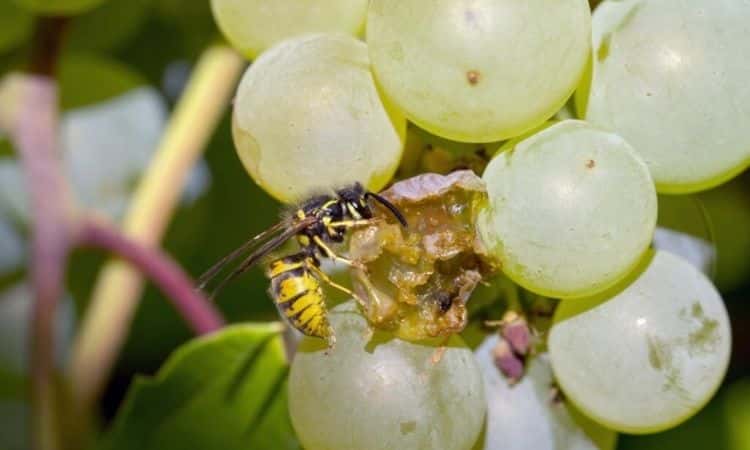
If you want to protect your grapes from wasps, you should therefore react as quickly as possible before any feeding damage occurs.
Grape protection bag against wasp feeding
The best known and also safest method to protect grapes from insects is protective bags for grapes. Winegrowers have been using this type of grape protection for a long time, but hobby gardeners can also benefit from it.
To protect the grapes, they are fitted with so-called grape protection bags a few weeks before the expected harvest time. These thin organza bags are individually put over the grapes and then knotted tight.
Berries that are already damaged should be removed from the grape beforehand to prevent the spread of rot and disease to the healthy berries.
Although it is a lot of work to bag the grapes to protect them from wasps, this method has a great advantage: since the wasps cannot eat through the organza tissue, the grapes are reliably protected.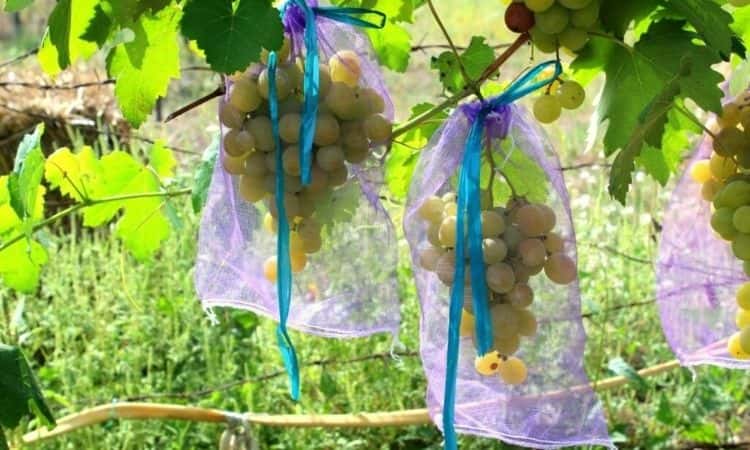
The airy tissue also allows the grapes to get enough air and sun so that they can grow undisturbed. If you don’t have organza bags at hand, you can also use paper bags. However, these should be checked regularly, as the paper is more susceptible to weather conditions.
Plastic bags, on the other hand, are unsuitable as protection for the grapes – due to the lack of air exchange, condensation water quickly forms in them, which promotes the spoilage of the grapes and the development of rot.
Water for the wasps
One tip that is often suggested to drive wasps away is to distribute water. In fact, a fine spray, for example from a water bottle or lawn sprinkler, will make the wasps suspect rain and retreat.
In practice, however, the protection of grapes with water has not proven to be effective: To keep the wasps away safely, the sprinkler must run all day, otherwise, the wasps will return to the grapes immediately afterward.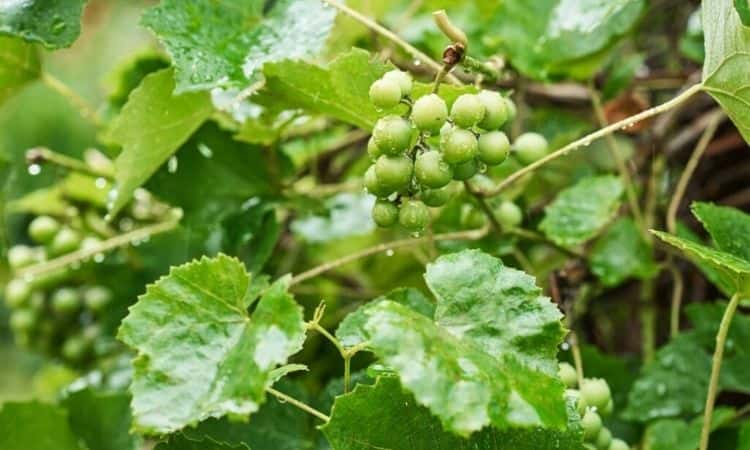
This not only results in enormous water consumption but is also impractical in other respects – the combination of high water volumes and unfavorable soil conditions (for example, due to a high clay content or compaction of the soil) can lead to waterlogging.
This can also damage the vine. Also, the increased air humidity caused by the water mist increases the risk of fungal diseases on the grapevine.
Essential oils against wasps
Essential oils are often mentioned as an insider tip when it comes to keeping wasps away. What works reliably on the terrace and balcony is only of limited use when it comes to protecting grapes from wasps.
Although wasps avoid the smell of certain oils (such as lavender), for this protection to be effective, it must clearly mask the smell of grapes.
Besides, the application in the garden is rather difficult: When spraying the vines with a mixture of essential oils and water, care must be taken to ensure that the essential oils are dosed correctly.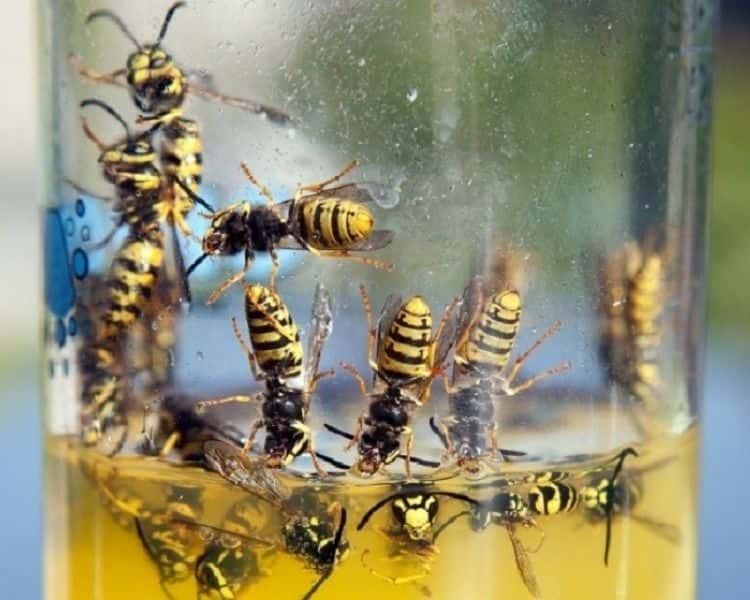
If dosed too low, they do not affect; if dosed too high, the essential oil can damage the grapevine. Also, the treatment must be repeated regularly (especially when it rains) so that the smell is maintained.
Scented candles or electric scent diffusers can distribute the essential oils over a large area but are not suitable for unsupervised use in the garden.
Primary rock flour for grape protection
If you want to drive wasps away from your grapes, you might think about using insecticides. Instead of spraying them and thus damaging valuable beneficial insects, you can also use primary rock flour.
Powdering the vines effectively repels wasps. The easiest way to spread the primary rock flour is to put it into an old stocking and shake it over the grapes. Alternatively, the rock flour can be mixed with water and sprayed onto the grapes.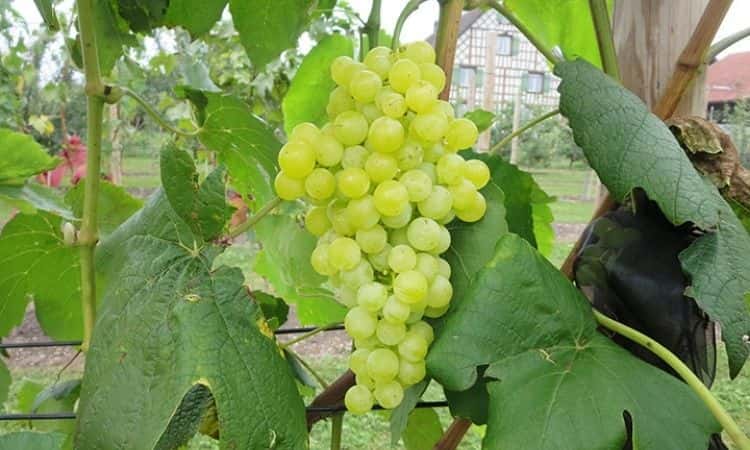
The layer of rock flour on the grape expels wasps in several ways: Firstly, they avoid the unpleasant, boulder-like surface, and secondly, the taste of the primary rock flour covers up the sweetness of the grapes, making them less attractive to wasps.
Depending on the weather (especially in heavy rain or wind) it may be necessary to pollinate the grapes several times. However, care should be taken not to cover too many leaves with the primary rock flour: If there is too much flour on the leaves, it can affect photosynthesis.
When it is time for harvesting, the grapes should be washed thoroughly to remove the primary rock flour. Then you can enjoy them without hesitation.
Protect grapes from birds
Not only wasps eat grapes – but birds also like sweet berries. Especially starlings and blackbirds show great talent in stealing the juicy grape directly from the vine.
But other bird species also like to use the vine as a source of food. Once the birds have discovered the vines, they often fly to them so often that there is hardly anything left for the gardener. Fortunately, there are some methods with which grapes can be protected from birds.
Safety nets against birds
The classical variant to protect grapes from birds is the so-called bird protection net. Due to the close-meshed nets, birds can no longer reach the grapes and are thus effectively deterred from stealing grapes.
However, there are some things to consider with bird protection nets: The green, fine-meshed nets, which are offered in many garden centers, often turn out to be a death trap. Because the animals see them only badly and can get tangled up in them.
Instead, conspicuous nets, for example in blue, are much better suited because they are also easily recognized by birds. Gardeners often choose large-mesh nets in the belief that they are particularly bird-friendly.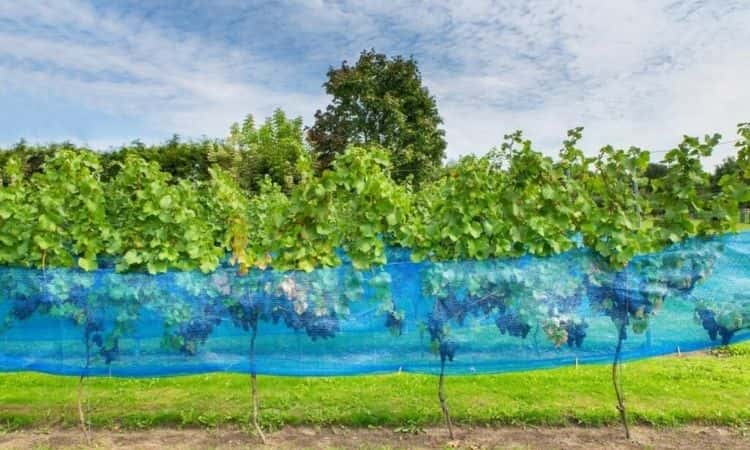
Unfortunately, this is a misconception: small birds can get caught with parts of their bodies in the large meshes and thus get tangled up or injured. When buying a safety net you should therefore make sure that the maximum mesh size is 25 x 25 mm.
When fixing the net, care must be taken to ensure that the net is tightly sealed to the vines at all points and that there are no gaps through which birds can stray under the net.
If the bird protection net forms such a gap, the net can be fixed to the vine at this point with clothespins. Also, the net should not lie on the ground, because hedgehogs, toads, or lizards can also get caught in it.
With vines, it is often not even necessary to use the whole vine. If the grapes are changing at about the same height, it is sufficient to net the grape zone only at the sides. However, here too, care must be taken to ensure that there are no gaps in the netting so that no bird can get lost inside.
Daily checks are also obligatory for a meticulously attached bird protection net: If an animal gets caught in it, you can hopefully help it and free it from its predicament.
CD for deterring birds
If you are looking for a gentle way to protect your grapes from birds, you can build an effective bird deterrent with a little craftsmanship. The materials for this can be found in almost every household: Old CD and a little string.
The CD can be attached individually or in rows on or near the grapes so that they can move freely in the wind. The movement and reflection of the sun on the reflective side of the CD will scare the birds and they will prefer to stay away from this place in the future.
However, care should be taken to attach the CD early – once the birds have discovered the fresh grapes, their appetite often overcomes the fear of the flashing CD. Even bad weather with cloudy skies can reduce the effectiveness of the CD, as the reflections of the mirrored surfaces are absent.
Besides, it comes quickly to a habituation effect, so that after some time smarter bird species can no longer be driven away. However, as a temporary solution to keep the birds away from the grapes for a short time, the CD is considered quite effective.
Scarecrows
A scarecrow in the garden can not only serve as a decorative eye-catcher but also be very helpful in protecting grapes from birds. However, there are a few tricks that should be observed so that the scarecrow can also develop its full effect: The scarecrow should look as human as possible.
This is not only for decorative reasons, but also to deter birds that recognize a human body in the scarecrow’s silhouette. Movable parts and wide clothes that flutter in the wind give the scarecrow additional vitality and thus better drive away from the birds.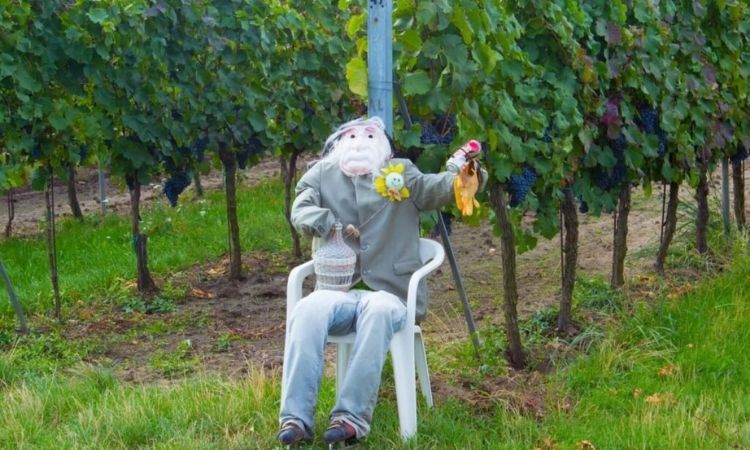
Reflective clothing and noises, for example from rattling tin cans on the scarecrow, also increase the effectiveness. To minimize the habituation effect, the scarecrow should regularly change its clothing (and if possible its location).
Especially the clever raven birds such as magpies and crows otherwise quickly recognize that the scarecrow is a dummy.
Supply other food sources
When birds are hungry, they attack our beds. A bird-friendly method of protecting grapes from birds is therefore to offer other food sources. A bird feeder that is located as far away from your grapes as possible will attract birds to another part of the garden.
It is now important to choose the right bird food: grains and seeds, as known from classic bird food, are rather unsuitable for distraction. In fact, soft food eaters such as blackbirds and starlings, which particularly like to feed on grapes, are the most common.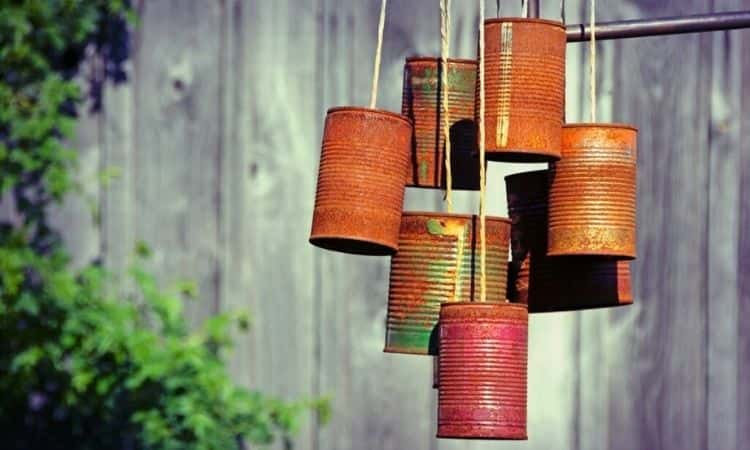
Their diet consists mainly of insects and berries, but also fruit. If one offers them fruit-remains, collected Engerlinge, worms, or also a few old grapes, the birds let themselves persuade its food fast instead from the bird-feed-house to get.
It is essential to continue feeding until the end of the harvest – this is the only way to prevent the birds from rushing to the vines again in the absence of feeding.
Do you want to learn more about how to feed birds properly? In our special article, you will not only learn how to make bird food yourself but also everything you need to know about the different types of food and how to choose the right food.
